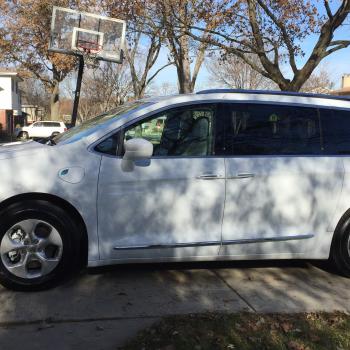![By Carin Araujo, http://www.prtc.net/~carin (Stock.xchng #197853) [Copyrighted free use], via Wikimedia Commons](https://wp-media.patheos.com/blogs/sites/533/2015/02/Baby.jpg)
Today’s Tribune article on children left in hot cars features a proposal to require that all new cars include some sort of visual and audio warning device so that parents won’t forget to take their babies out of the car. Whether it’s a recognition that a rear door was opened just before the start of the trip, but not after the end of the drive, or a recognition of a “breath” in the backseat, advocates, or, specifically, U.S. Rep. Jan Schakowsky, say(s), “My car reminds me when I get out of the car and the keys are in there — how can we not remind the driver to check the backseat?”
As it is, an average of 37 children have died from being left behind in cars every year since 1998. Statistics from Kidsandcars.org show no discernible pattern except that the numbers have been increasing. (The Trib article suggests this is due to global warming, but this seems improbable; maybe the advent of smartphones caused increasing numbers of parents to be distracted, e.g., by having a phone call on the way to daycare/work.) They also show a breakdown, that 55% percent of deaths were due to a child being forgotten (or a parent committing murder but successfully convincing everyone it was an accident), 28% were children who “got in on their own” (e.g., were playing unsupervised but then either locked themselves in or fell asleep) and 13% were intentional (whether that includes the “I thought my kid would be fine” or just the homocides, I don’t know).
But do the math.
There were 17.5 million new cars sold last year.
Assume that this enhancement technology costs $1,000 per car.
Assume that all 38 * 55% percent of the kids who die are saved by this technology.
That’s a cost of 833 million per life saved.
That’s an extreme case. We could say that the tech costs $100; then it’s 83 million per life saved. If we assume that the go-in-on-their-own lives are also saved, that brings the cost-per-life down, too, and we’re at about $50 million.
And, again, this is all for something that’s the result of human error in the first place. And some of those lives saved have to be balanced out by the marginal cost meaning that, for some number of people, this will tip the scales to keeping an older, less safe car for longer.
If this weren’t a quick lunchtime post, I’d dig up more background, on whether there are already metrics in place for this sort of thing (though this particular legislation doesn’t seem to care), or whether any of this technology exists in the first place to give some idea of its cost. (It seems not to, though, or I imagine it would have been mentioned; back-up cameras, the mandate for which is coming up, are currently available as an option.)
Plus, there’s always the issue of risk compensation — if people think of this as a guarantee, and take for granted that they’ll be warned, and drop any other “don’t forget the kid” measures they had previous adopted, then it might not have the hoped-for effect.
On the other hand, perhaps it will turn out to be a low-cost item. After all, the solution for kids being stuck in trunks, turned out to be a low tech glow-in-the-dark trunk release.
And if it weren’t mandatory, how much would you pay for a warning device, if you have small children of your own, or if you don’t? What if there were an aftermarket device, or an app paired with the carseat?
But as it is, I’ll just leave it as a discussion item.
Image: By Carin Araujo, http://www.prtc.net/~carin (Stock.xchng #197853) [Copyrighted free use], via Wikimedia Commons













